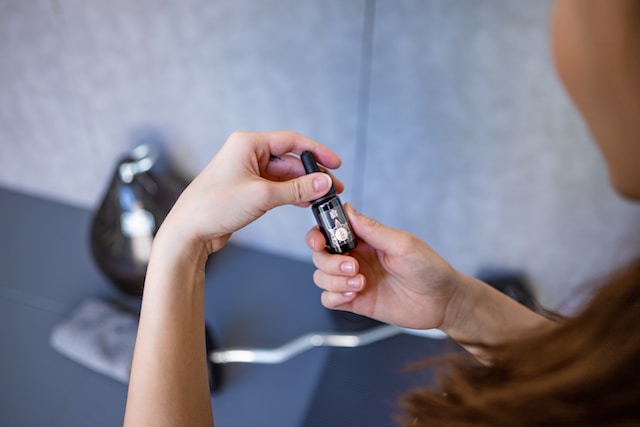What Are SARMs and How Do They Differ from Peptides?

Are you looking to boost your fitness, enhance your athletic performance, or improve your physique? In your quest for better results, you might have come across the terms SARMs and peptides. Both are buzzwords in the world of sports and bodybuilding, but what are they, and how do they differ?
Here are some of the fundamentals of SARMs and peptides, helping you understand the key distinctions between these compounds and how they could potentially benefit your fitness journey.
SARMs
SARMs are a class of compounds known for their selective action on androgen receptors in the body. Unlike traditional anabolic steroids, Selective Androgen Receptor Modulators (SARMs) are designed to target specific tissues, primarily muscle, and bone, while minimizing unwanted side effects. This selectivity makes them a popular choice for those seeking to build lean muscle mass and improve bone density without the hormonal imbalances associated with steroids.
SARMs work by binding to androgen receptors in the muscles, triggering an increase in protein synthesis and muscle growth. While they offer significant benefits for muscle development, they are not without risks. Potential side effects can include hormonal disruptions, liver toxicity, and cardiovascular issues. It’s essential to use SARMs responsibly and consult with a medical professional if you plan to incorporate them into your fitness regimen.
Peptides: The Building Blocks of Proteins
Peptides, on the other hand, are short chains of amino acids that serve as the building blocks of proteins in your body. They play various roles in physiological processes, and some have gained attention for their potential fitness-related benefits. One notable group of peptides is Growth Hormone Releasing Peptides (GHRPs), which stimulate the release of growth hormone, aiding in muscle recovery and fat loss.
Unlike SARMs, peptides do not directly impact androgen receptors, making them less effective for muscle building. However, they can be valuable in improving recovery, reducing inflammation, and enhancing overall health. Common peptide options include BPC-157 for tissue repair and TB-500 for recovery from injuries, both of which can be beneficial for athletes and fitness enthusiasts.
Key Differences: SARMs vs. Peptides
The primary distinction between SARMs and peptides lies in their mechanism of action and intended use. SARMs are best suited for those looking to increase muscle mass and enhance physical performance, while peptides are more versatile and can be employed for a range of health-related goals, including injury recovery and general well-being. Additionally, the potential risks and side effects associated with SARMs are greater than those of peptides, making responsible usage and consultation with a healthcare professional paramount.
Regulation and Legality
Another important aspect to consider when weighing SARMs against peptides is their regulation and legality. SARMs have faced scrutiny and restrictions in many countries due to concerns about their safety and potential misuse. In contrast, many peptides are available over the counter or via prescription and are generally considered safe when used responsibly.
It’s essential to research the legal status of these compounds in your region and abide by the local regulations. This can save you from potential legal troubles and ensure your fitness journey remains on the right side of the law.
Cost Considerations: SARMs vs. Peptides
Cost is a significant factor when deciding between SARMs and peptides. SARMs tend to be more expensive than peptides, primarily due to the research and development involved in creating these selective compounds. Additionally, SARMs often require more precise dosing and cycle planning, which can further increase their overall cost.
On the other hand, peptides are relatively more affordable and offer a broader range of options to fit your budget. When making your choice, think about your financial resources and how they align with your fitness goals.
Stacking SARMs and Peptides: A Synergistic Approach
For some individuals, the ultimate fitness strategy involves combining both SARMs and peptides. This approach aims to harness the muscle-building power of SARMs while benefiting from the recovery and wellness support that peptides provide. Stacking these compounds should be done with great care, consulting a healthcare professional to ensure your approach is safe and effective. The synergistic effect of combining SARMs and peptides can be a powerful tool, but it requires precise planning and monitoring to maximize your results while minimizing potential risks.
SARMs and Peptides: Monitoring and Risks
One critical aspect that sets SARMs and peptides apart is the level of risk and the need for monitoring. SARMs, due to their impact on androgen receptors, can lead to more significant hormonal fluctuations, which may result in side effects such as decreased testosterone levels, acne, and hair loss. To mitigate these risks, regular blood work and close monitoring by a healthcare professional are essential when using SARMs.
Peptides, with their milder action, generally carry fewer risks, but still, require responsible usage. Monitoring your response to peptides, particularly when using them for specific purposes like injury recovery, is wise to ensure you’re achieving the desired results without adverse effects.
Bioavailability and Administration
Bioavailability, or the body’s ability to absorb and utilize a substance, is another critical factor to consider when choosing between SARMs and peptides. SARMs typically have a high bioavailability when taken orally, making them convenient to use. However, this also increases the potential for side effects, as they can affect the liver.
In contrast, peptides often require more precise administration methods, such as injections, to maximize their bioavailability. While this can be less convenient, it allows for more controlled and targeted delivery of the peptide, reducing the risk of side effects and ensuring optimal results. Your preference for the administration method may influence your choice between these compounds.

Your selection should be driven by your unique fitness goals, budget, the legal context in your area, and your willingness to monitor and manage potential risks. SARMs, with their targeted muscle-building effects, can be a powerful tool but come with greater risks and regulatory constraints. Peptides, while more versatile and often safer, may require more precise administration and may be less effective for certain goals.
As you embark on your fitness journey, prioritize safety and informed decision-making. Consult with healthcare professionals, stay updated on the latest research, and remember that your choices today can shape your health and fitness for years to come.





